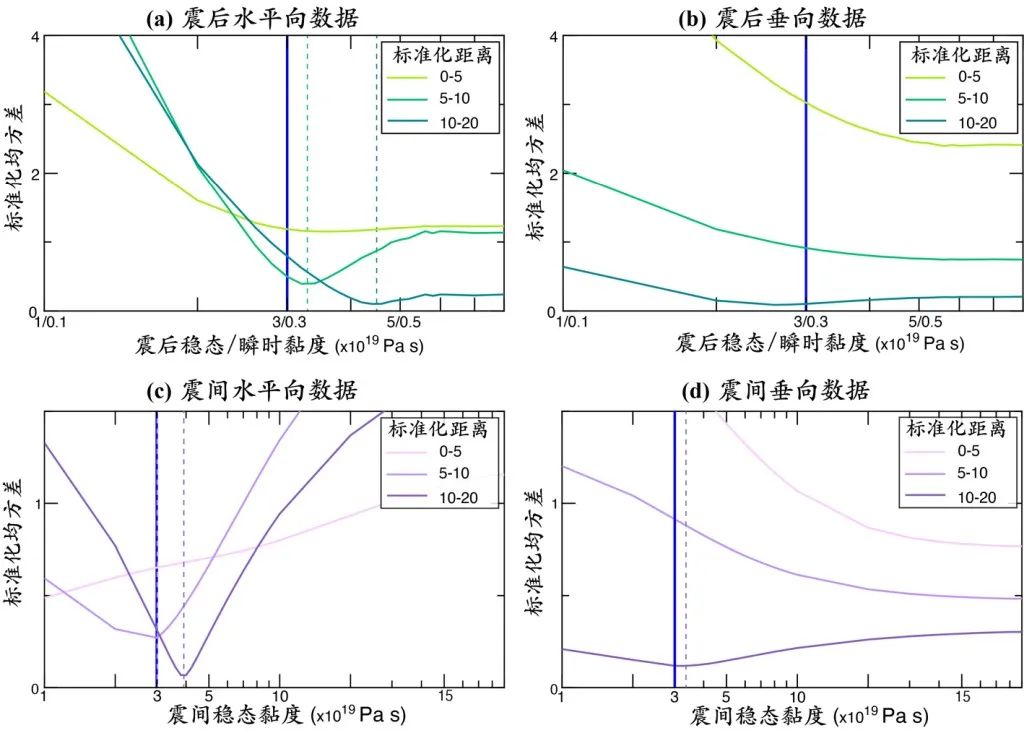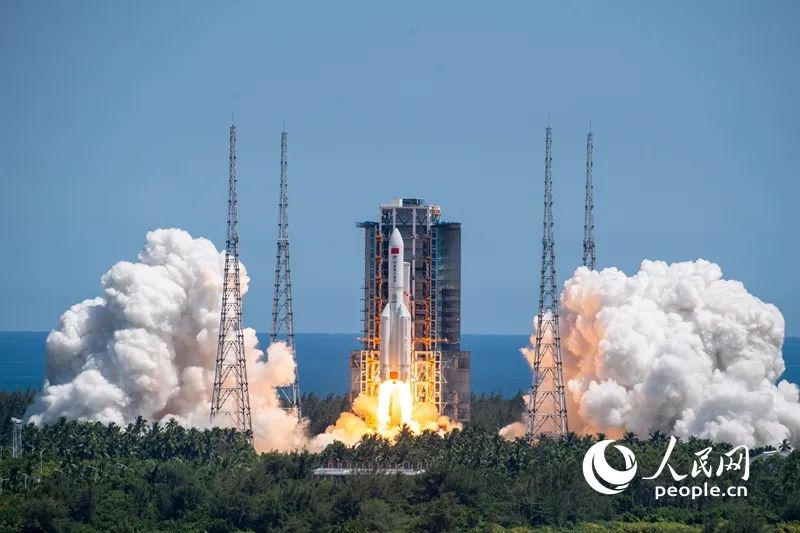Li Shaoyang et al.-JGR: Rigid dive board affects the viscosity of the vertical/epicenter mantle and the end layer sliding estimate
Author:Institute of Geological Earth Time:2022.09.25


The dive belt is one of the most active areas of the construction activities on the earth, and it has bred most of the earthquakes on the earth. How to produce earthquakes for dive bands has always been the most concerned on scientists. To study this problem, it is necessary to accurately determine the time and space characteristics of the dive large fault sliding layer. A level measurement) not only contains the information of the fault movement, but also includes the influence of the mantle flow and the impact of its spatial structure. Specifically, during the dive earthquake cycle (Wang et al., 2012), the same earthquake stress quickly stretched the soft streaming mantle under the mainland sector so that it flowed towards the trench after the earthquake (Pollitz et al., 2008 2008 ), And the atresia of the seismic interior layer makes the constructor squeeze the soft current mantle under the mainland sector, so that the mantle flow direction of the earthquake is towards the land (Li et al., 2020) (Figure 1). Because there is a coupling relationship between the mantle (viscous elastic) relaxation process and the fault sliding process, if a process is roughly considered (such as assuming that the time and space is uniform), it will inevitably affect the accurate determination of another process. On the other hand, observing data time and space discontinuousness allows the two processes to have a strong multi -solution. It is necessary to consider two processes more detailed in order to better understand the dynamic process of dynamic dynamics.
Layout Earth models are simple and highly calculated, which is a common model for studying the seismic process of dive bands. If you ignore the rigid dive board inserted into the mantle, it may cause the systemic deviation of the fault sliding and the mantle viscosity estimation, which will affect the understanding of the fracture mechanics/flow change, the danger of earthquake/tsunami, and the stress/stress state and power of the dive system. A series of issues such as study process. In response to this problem, Li Shaoyang, an associate researcher of Li Shaoyang and Researcher Chen Ling of the State Key Laboratory of the Institute of Geology and Geophysics of the Chinese Academy of Sciences, designed two end metaphysical models of dive models and layered models (Figure 1). Whether the dive sheet is sticky to exclude the systematic deviation generated by other structures and processes. First of all, they assume that the dive model is a real model to obtain virtual data of different time and space surface surface changes; then, then use the layered model to counter the sliding of the fault sliding and the viscosity of the mantle to quantitatively contrast the difference between the model. Finally, based on the northeast and southwest of Japan, the effects of dive boards were used to use its dense GNSS speed fields to have the effects of dive plates on the post -shock and earthquake end layer sliding and mantle viscosity.

Figure 1 The two simplified end element models -dive and layered model -simulated earthquake and post -earthquake speed fields are the same. The pink arrow represents the variable speed, the red line segment represents the hair shock fracture, the white line segment represents the boundary between the elastic body and the sticky bomb body
Theoretical model research found:
(1) Under completely the same fault sliding and boundary conditions, the speed field characteristics of the layered and dive models are similar, but there are still different details -the horizontal variation of the layered model is larger than the dive model. Facts (Figure 1 Black dotted frame), indicating that the layered model research has a larger potential error than horizontal deformation.
(2) Choose the deformation data of different directions (horizontal or drooping) and different spaces as constraints as constraints. The layered model will overestimate the viscosity of the mantle in the epicenter and late epicinal (Figure 2, the viscosity corresponding to the low point of the square differential curve will be Value/viscosity range is mostly higher than the viscosity value corresponding to the blue vertical line). Nevertheless, there is a specific difference in the steady -state/instantaneous viscosity value of different directions and different space data constraints. For example, the viscosity obtained by the post -earthquake and earthquake level data layered models increases with the distance between the gap (Figure 2A and Figure 2C). It can be seen that the viscosity estimation error caused by layered models is systemic and requires further analysis of the space -time range of available data. These results also reflect the importance of reasonable design and the importance of the space distribution and continuous observation of the land measurement station.
(3) Use the layered model to counter the two -end meta -model simulation to the after -to -earth and seismic velocity field differences. Due to the relatively large variables of the layered model simulation and relatively wider variable range (Figure 1), the layered model tends to obtain a larger fault sliding amount.

Figure 2 The viscosity of layered model with different virtual data constraints. The blue vertical line represents the real viscosity in the dive model, and the optimal layered model viscosity of different colors dotted lines
Based on GNSS data, the study of real case research in Northeast Japan (Figure 3A) and the southwest dive belt is consistent with the conclusions of the above theoretical model research, that is, the layered model overestimates the post -earthquake and the epicenter viscosity (Figure 3B), and obtains a larger fault Sliding volume (see Figure 3C). It is worth noting that the theoretical model research assumes that the dive model is a real model, and there is no assumption in the case study. The results of the two models are the same actual GNSS observation data constraints. Therefore, the consistency of the two conclusions further illustrates that the use of layered models to study the dynamic dynamics process can lead to systemic errors, and the GNSS deformation observation of the (Japan) dive band may contribute to the contribution of deep rigid dive boards.

Figure 3 Utilize the viscosity and fault sliding of the 2011 Northeast Earthquake to GNSS data and two end element models in the 2011 Northeast earthquake. Figure a purple line represents model section
Although the layered models are easy to obtain analysis and solution and have been widely used in the study of the dive zone earthquake cycle, this study has re -examined the sports and dynamic conclusions obtained by the previous layered models, and emphasized that the dive band earthquake cycle research neutral dive board in the middle of the rigid dive board The importance of the film. Answer many important scientific issues in the earthquake science today, such as the faults of the deep earthquake rupture of the dive zone (as shown in the black ellipse area of Figure 3A), and whether the extent of which exists or exists in the earthquake (pregnancy shock) period, and at the earthquake, and at the earthquake, at the earthquake, at the earthquake, at the earthquake, and at the earthquake, the earthquake is at the earthquake. Whether or not to exist or exist in the later period requires more accurate and more fine model quantitative analysis results (considering the first -order structure and deep structure of dive bands). These results directly related to our understanding of the gestational and seismic mechanisms of the swaying layer and even the fault of the mainland.研究成果发表于国际学术期刊JGR: Solid Earth(李绍阳*,陈凌.Elastic slab in viscoelastic mantle: Effects on determining megathrust slip and mantle viscosity during postseismic and interseismic phases[J].Journal of Geophysical Research: Solid Earth, 2022 , 127: E2022JB024730. Doi: 10.1029/2022JB024730). Study received funding from the National Natural Science Foundation of China (42288201).
Beauty editor: Fu Shixu

School pair: Wanpeng
- END -
Happy report!Successful launch!

According to the China Manned Aerospace Engineering Office, at 14:22, July 24, 202...
One arrow Samsung!Gu Shenxing No. 1 Yao San Lae Rockets successfully launched
China News Service, Beijing, August 9th (Ma Shuai Sha Yupeng Wang Zhuhuan Zheng Weijie) At 12:11 on August 9, Beijing time, Gu Shenxing No. 1 Yaosan Load Rockets successfully launched at the Jiuquan S